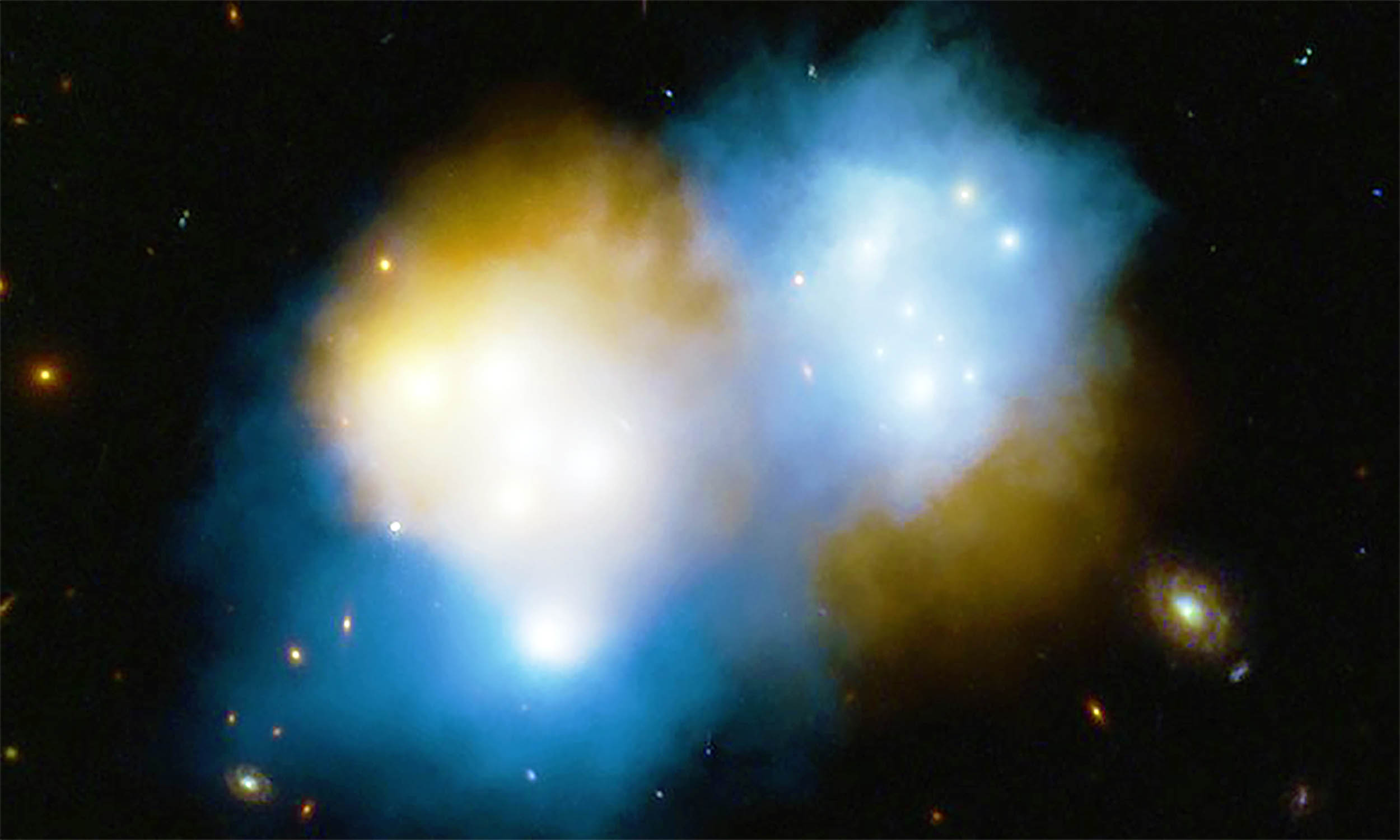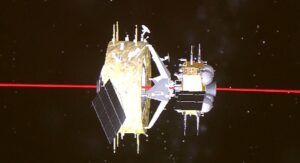Astronomers have revealed the secrets behind an epic collision between two massive galactic clusters, showing that dark matter and ordinary matter can actually separate during these massive events.
Located billions of light-years away, these clusters are home to thousands of galaxies and provide deep insight into the complexity of our universe.
When they collide, dark matter – invisible matter affected by gravity but not light – moves in front of normal matter, which includes gas and stars.
What does this mean for our understanding of cosmic structures?
As we delve deeper into these phenomena, we uncover not only the mechanics of the universe, but also broader implications that could change our understanding of cosmic interactions and their significance for the natural world.
Dark matter and galaxy clusters
Galaxy clusters are huge cosmic structures held together by gravity. Only 15% of their mass is normal matter, mostly hot gas, stars and planets, while the remaining 85% is dark matter.
During the collision of the clusters, collectively known as MACS J0018.5+1626, the galaxies themselves mostly remained unscathed due to the vast spaces between them.
However, the gas between the galaxies collided, became turbulent and superheated. While both dark and normal matter are affected by gravity, normal matter also interacts through electromagnetism, which slows it down during the collision.
Therefore, dark matter moved forward, separating from normal matter.
“Dark matter is like sand, and it flies forward,” said lead author Emily Silich, a graduate student working with Jack Sayers, a professor of physics at Caltech and the study’s principal investigator.
MACS J0018.5 is a true treasure
A similar separation of dark and normal matter was previously observed in the Bullet cluster. However, the orientation of the MACS J0018.5 collision was different, providing a unique perspective.
“With Bullet Cluster, it’s like sitting in the stands watching a car race,” Sayers said. “In our case, we’re more like straight up with radar, we’re standing in front of a car that’s coming towards us and we can determine its speed.”
To measure the speed of the gas in the cluster, the researchers used the kinetic Sunyaev-Zeldovich (SZ) effect.
This effect occurs when photons from the cosmic microwave background are scattered by electrons in hot gas, causing a Doppler shift. By measuring this shift, scientists can determine the speed of gas clouds in galaxy clusters.
“Sunyaev-Zeldovich effects were still a very new observational tool when Jack and I first swung a new camera at the CSO on galaxy clusters in 2006,” said Sunil Golvala, professor of physics and a Silich postdoctoral fellow in the faculty.
“We look forward to many new surprises when we place next-generation instruments on the telescope at its new home in Chile.”
Normal and dark matter separate into clusters
Until 2019, researchers used the kinetic SZ effect to measure the velocity of gas in several galaxy clusters and data from the Keck Observatory to determine the velocity of galaxies, which also indicates the velocity of dark matter.
However, they noticed an anomaly in MACS J0018.5: the hot gas was moving in the opposite direction of the dark matter. At first they thought it might be a data error.
“We had this complete weirdness with speeds in opposite directions,” Sayers explained. “And then Emily stepped in and unraveled everything.”
Silich used data from the Chandra X-ray Observatory to analyze the temperature and location of the gas and its shock levels. “These cluster collisions are the most energetic phenomena since the Big Bang,” she said.
The team also collaborated with Adi Zitrin of Ben-Gurion University of the Negev in Israel to map dark matter using gravitational lensing and with John Zuhoun of the Harvard Smithsonian Center for Astrophysics to simulate the cluster collision.
Cluster collisions and the discovery of dark matter
The researchers found that the clusters, before they collided, were moving towards each other at about 3,000 kilometers per second.
The orientation of the collision and the separation of dark and normal matter explain the strange velocity measurements.
This research provides a new method to directly probe the behavior of dark matter, offering insights into its mysterious nature.
“This research is a starting point for more detailed studies of the nature of dark matter,” Silich said. “We have a new type of direct probe that shows how dark matter behaves differently from normal matter.”
In the future, more studies like this could reveal further clues about dark matter, helping scientists understand how such a mysterious substance interacts with the universe.
The discovery used data from multiple observatories, including the Caltech Submillimeter Observatory, the WM Keck Observatory, NASA’s Chandra X-ray Observatory, the Hubble Space Telescope, the European Space Agency’s Herschel Space Observatory, and the Atacama Submillimeter Telescope Experiment in Chile. Some of the data was collected decades ago, and the full analysis was done in the last few years.
The study was published in Astrophysical Journal.
—–
Like what you read? Subscribe to our newsletter for engaging articles, exclusive content and the latest updates.
Check us out on EarthSnap, a free app brought to you by Eric Ralls and Earth.com.
—–



